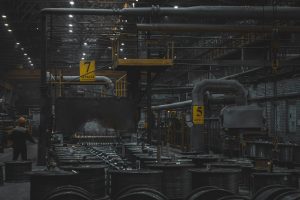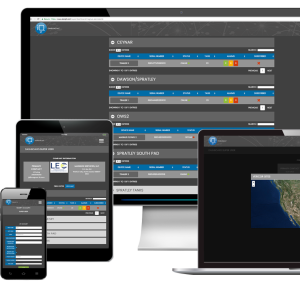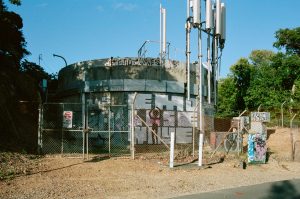Press Contact:
Uncategorized
What Is a Lift Station and What Does It Do?
Did you know that around 150,000 lift stations operate across the United States? These installations are the unsung heroes of wastewater management, moving wastewater for communities of all sizes—from small towns to big cities. By managing waste efficiently, they help maintain public health and protect the environment.
If you’ve ever wondered ‘what is a lift station and what does it do?’, keep reading to explore how these essential systems function, understand their key components and learn why they are vital to protecting public health and the environment.
Key Points
- Function: Lift stations move wastewater from lower to higher elevations.
- Average Capacity: On average a lift station can move 1,000 to 5,000 gallons of wastewater per minute.
- Key Components: Wet wells, pumps, control systems, and alarms.
So, What Exactly Is a Lift Station?
A lift station is like a pumping station that plays a vital role in sewage collection systems, especially where gravity flow isn’t enough to move the wastewater to where it needs to be. These stations overcome that obstacle by ensuring that wastewater travels from lower to higher elevations, making them essential for effective waste management in many areas.
Lift stations are each made up of several different component parts, all working together to carry out this purpose, as detailed below. The wet well collects incoming sewage, and when the water level reaches a certain point, pumps kick in to move the wastewater to treatment facilities.
Components of a Lift Station
Each lift station usually includes common essential parts like wet wells, pumps, valves, and control panels. The wet well acts as a storage area for incoming wastewater, while the pumps lift the sewage to the height needed for further transport. These components are the heart of the lift station, and ensure smooth operation.
How LEC Technologies Can Help
Of course, this method of operation also calls for sensing equipment to be present (to monitor the water level in the wet well so that the pumps can be engaged when appropriate), and offers great scope for automation of the pumping process too - that’s where the LEC Technologies team can help.
The design and efficiency of these elements are also vital for the lift station's effectiveness. For example, a well-designed control panel can monitor the system's performance and alert operators if there are any problems, ensuring that wastewater is managed properly.
Exploring the Various Types of Lift Station
There are two main types of lift stations: submersible and dry well/wet well pump stations. Submersible stations house pumps under the water, making them great for deep installations, while dry well/wet well setups place their pumps above the water level. These differences between the two types can also affect installation costs and maintenance practices - so they are something to be aware of.
Knowing these differences helps operators choose the right lift station for their needs. Picking the right lift station is highly important, since making the right choice can deliver greater efficiency and cost effectiveness, while making the wrong choice can lead to lower efficiency and potential headaches down the line.
Maintenance of Lift Stations
Regular maintenance is key to keeping lift stations running smoothly. Routine inspections and cleaning can help prevent clogs and breakdowns, extending the life of the equipment.
Operators should therefore set and abide by clearly-defined maintenance schedules that include regular checking of the pumps, control panels, and wet wells. By sticking to these schedules, facility managers can spot potential issues before they escalate, reducing downtime and repair costs. This proactive approach not only saves money but also boosts the reliability of the wastewater system.
Common Issues Encountered
Lift stations can encounter several common problems, including clogging, mechanical failures, and electrical issues. These problems can disrupt the station's normal operation, leading to potential sewage overflows and environmental hazards. Just as a small leak in a dam can lead to major issues, minor issues can grow into big problems if not addressed swiftly and thoroughly.
Looking for a dependable solution to help you prevent and manage these common issues? Visit our packaged solutions page to learn how our Lift Station Management solutions can help you minimize downtime, lower costs, and protect the environment.
Monitoring Systems in Lift Stations
The presence of monitoring systems such as SCADA (Supervisory Control and Data Acquisition) enhance lift station management by providing real-time data and alerts. These systems allow operators to easily keep an eye on pump performance and other important performance metrics remotely - while at the same time, cloud technology improves operational efficiency by enabling quick responses to potential problems.
Having this information available can help prevent costly downtime and ensure smooth wastewater management. In deployments like these, smart technology like ours acts as a safety net, ensuring that your stations run without a hitch.
Emergency Preparedness for Lift Stations
Being prepared for emergencies is crucial to minimizing any associated downtime. Taking preparedness measures like setting up backup generators and training staff regularly ensures that operators can respond effectively to any situation. This readiness can be the difference between facing and dealing with a manageable challenge, or a catastrophic situation.
Conclusion
In conclusion, lift stations are vital parts of wastewater management systems that ensure efficient sewage transport. By understanding their operation, maintenance, and role in urban planning, communities can safeguard public health and improve waste management strategies. The significance of lift stations goes beyond their functionality; they represent a commitment to a cleaner, healthier environment.
For more information about what lift stations do and how we can help, don’t hesitate to contact us.
Need Help with Easier Industrial Solutions? We Are Experts!
We Are Experts in transforming industrial operations. Let's discuss how we can help your business achieve similar results.




